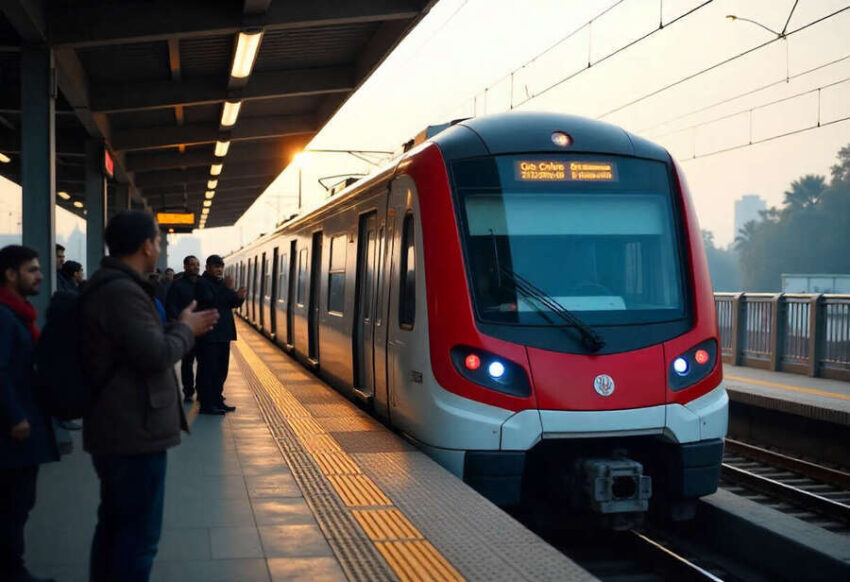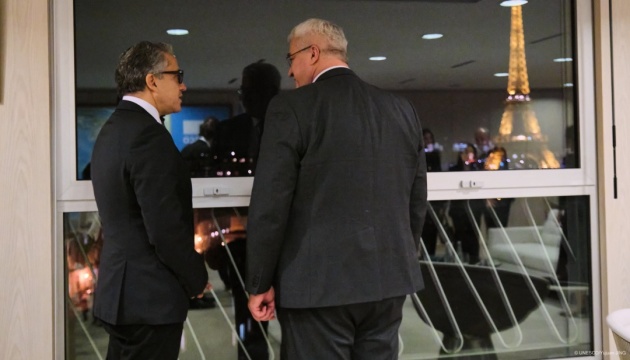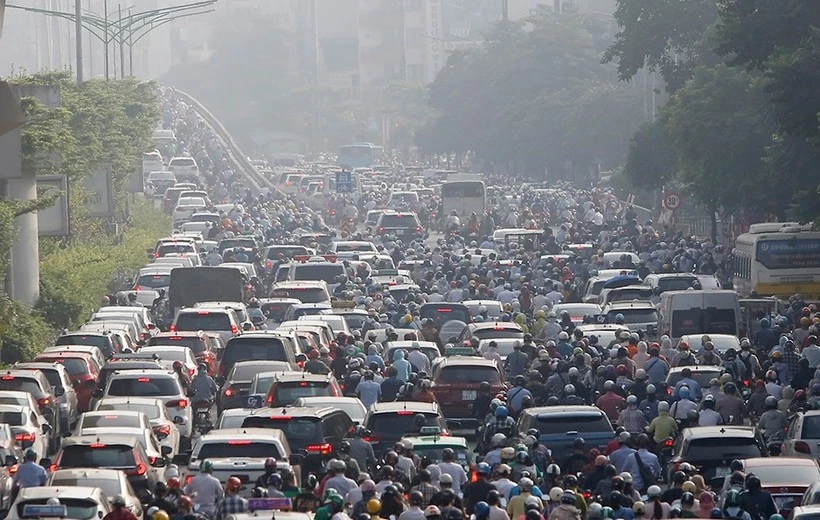Kanpur Metro Reaches Crucial Testing Milestones, Marking a Significant Step Towards Cleaner and More Efficient Urban Transport Across Uttar Pradesh: New Update – Travel And Tour World

Report on Kanpur Metro Project Milestones and Alignment with Sustainable Development Goals
Published: November 16, 2025
1.0 Executive Summary
The Kanpur Metro project, managed by the Uttar Pradesh Metro Rail Corporation (UPMRC), has achieved critical testing milestones, advancing its mission to establish a modern, efficient, and sustainable urban transport system. This report details the project’s progress, its integration within Uttar Pradesh’s broader urban mobility strategy, and its significant contributions to achieving the United Nations Sustainable Development Goals (SDGs), particularly SDG 11 (Sustainable Cities and Communities), SDG 13 (Climate Action), and SDG 9 (Industry, Innovation, and Infrastructure).
2.0 Project Status and Technical Advancements
2.1 Testing and Commissioning Milestones
Recent progress underscores the project’s advancement towards operational readiness. Key testing activities are focused on ensuring safety, reliability, and efficiency, directly supporting the development of resilient infrastructure as outlined in SDG 9.
- Signaling System Trials: Ongoing signaling work on the Baradevi–Naubasta stretch is a critical phase. The Performance Acceptance Test (PAT) is currently underway on a 5-kilometer elevated section to validate the system’s performance.
- Operational Readiness Tests: Following the PAT, a Station Acceptance Test (SAT) will be conducted with live trains to confirm the operational functionality of the corridor before its public launch.
- Fast-Track Delivery: The priority corridor from IIT Kanpur to Motijheel was completed in just over two years, demonstrating UPMRC’s capacity for efficient project execution, a key component of building effective infrastructure (SDG 9).
2.2 Innovation in Passenger Mobility
The introduction of the National Common Mobility Card (NCMC) represents a significant innovation in promoting accessible and integrated public transport systems, a core target of SDG 11.
- Integrated Services: The NCMC smart card allows seamless travel across metro and bus services and can be used for parking and retail payments.
- Enhanced Accessibility: By simplifying payments and transfers, the NCMC improves the accessibility and user-friendliness of public transit, encouraging a shift away from private vehicles.
3.0 Contribution to Sustainable Development Goals (SDGs)
The Kanpur Metro project is a cornerstone of Uttar Pradesh’s strategy to build sustainable urban environments and is directly aligned with several SDGs.
3.1 SDG 11: Sustainable Cities and Communities
The project provides a direct response to the need for safe, affordable, accessible, and sustainable transport systems (Target 11.2).
- Reduced Congestion: The metro offers an efficient alternative to road transport, mitigating traffic congestion and connecting residential, commercial, and institutional hubs.
- Inclusive Urbanization: By enhancing public mobility, the project fosters inclusive and sustainable urban development for all residents.
3.2 SDG 13: Climate Action & SDG 3: Good Health and Well-being
As a low-carbon transport solution, the metro is vital for climate change mitigation and improving public health.
- Lower Emissions: The electric-powered metro system will significantly reduce greenhouse gas emissions and the city’s carbon footprint.
- Improved Air Quality: A reduction in vehicular traffic will lead to lower levels of air pollution, contributing to better public health outcomes (Target 3.9).
3.3 SDG 9: Industry, Innovation, and Infrastructure
The project exemplifies the development of quality, reliable, and resilient infrastructure (Target 9.1).
- Modern Technology: The use of advanced signaling systems and state-of-the-art rolling stock showcases a commitment to technological innovation.
- Economic Enablement: This modern infrastructure serves as a foundation for sustainable economic activity and growth in the region.
4.0 Regional Integration and Future Outlook
4.1 Uttar Pradesh’s Urban Transit Network
Kanpur Metro is a key component of a state-wide initiative to revolutionize public transport, alongside projects in Lucknow and Agra. This integrated approach amplifies the region’s progress towards SDG 11.
- Lucknow Metro: The 22.878-kilometer corridor has set benchmarks for rapid construction and operational efficiency.
- Agra Metro: With two corridors under development, the Agra Metro will soon provide sustainable mobility for residents and tourists, further strengthening the state’s green transport network.
4.2 Future Vision and Investment
UPMRC is committed to expanding the metro network with a focus on sustainability, passenger comfort, and technological excellence. With financial support from partners like the European Investment Bank (EIB), Uttar Pradesh is positioned to continue its urban transit transformation.
The expansion is critical to accommodate rising demand from local populations and growing tourism, ensuring that development remains sustainable and inclusive. The continued success of these metro projects signals a transformative shift towards a cleaner, faster, and more reliable public transportation landscape across Uttar Pradesh, fully aligned with global sustainability objectives.
Analysis of Sustainable Development Goals in the Article
1. Which SDGs are addressed or connected to the issues highlighted in the article?
- SDG 9: Industry, Innovation, and Infrastructure: The article focuses on the development of a modern, high-capacity public transportation system (Kanpur Metro). This is a clear example of building resilient, sustainable, and quality infrastructure to support urban development. The text highlights technological advancements like “advanced signaling” and “state-of-the-art rolling stock,” as well as efficient project management (“fast-track project delivery”).
- SDG 11: Sustainable Cities and Communities: The primary theme of the article is improving urban mobility in Uttar Pradesh. The Kanpur Metro project is designed to create a “cleaner, more efficient urban transport system” that provides residents with a “fast, sustainable, and reliable travel option.” This directly contributes to making cities more inclusive, safe, resilient, and sustainable by offering an alternative to road-based traffic and connecting key urban areas.
- SDG 13: Climate Action: The article repeatedly describes the metro as a “cleaner” and “greener” infrastructure project. By providing a sustainable alternative to private vehicles, the metro system helps reduce the carbon footprint of urban transport, thereby contributing to climate change mitigation efforts. This represents an integration of climate action into urban planning and infrastructure development.
- SDG 8: Decent Work and Economic Growth: The article links the development of the metro system to economic activity, particularly tourism. It notes that “rising tourism” creates demand for increased capacity and that the Agra Metro will provide tourists with an “efficient travel option.” This shows how sustainable infrastructure can support and promote sustainable tourism, which is a driver of economic growth.
2. What specific targets under those SDGs can be identified based on the article’s content?
-
Target 11.2: By 2030, provide access to safe, affordable, accessible and sustainable transport systems for all, improving road safety, notably by expanding public transport.
- The article directly addresses this target by describing the Kanpur Metro as a project to create a “sustainable, and reliable travel option for residents.” It aims to enhance public transit and improve daily commutes by connecting “residential neighborhoods, commercial zones, hospitals, and universities.” The introduction of the National Common Mobility Card (NCMC) further enhances accessibility by integrating various transport and retail services.
-
Target 9.1: Develop quality, reliable, sustainable and resilient infrastructure, including regional and transborder infrastructure, to support economic development and human well-being, with a focus on affordable and equitable access for all.
- The article details the development of quality and reliable infrastructure through mentions of “crucial testing milestones,” “Performance Acceptance Test (PAT),” and the use of “advanced signaling.” The project’s sustainability is highlighted by its description as “cleaner, greener infrastructure,” and its rapid completion (“just over two years” for the priority corridor) demonstrates a focus on efficient delivery. The backing from the European Investment Bank (EIB) also points to the development of significant, high-quality infrastructure.
-
Target 13.2: Integrate climate change measures into national policies, strategies and planning.
- The state of Uttar Pradesh’s commitment to building a “cleaner, faster, and more reliable service” through the metro network is an example of integrating climate-friendly policies into regional urban planning. The shift towards a mass rapid transit system is a strategic measure to reduce greenhouse gas emissions from transportation in major cities like Kanpur, Lucknow, and Agra.
-
Target 8.9: By 2030, devise and implement policies to promote sustainable tourism that creates jobs and promotes local culture and products.
- The article explicitly connects the metro’s development to the needs of a growing tourism sector. The inauguration of the Agra Metro’s priority stretch between “Taj East Gate and Mankameshwar” is a direct policy implementation to support sustainable tourism by providing a “cleaner, more efficient travel option” for the “influx of visitors.”
3. Are there any indicators mentioned or implied in the article that can be used to measure progress towards the identified targets?
- Length and Coverage of the Metro Network: The article mentions specific corridor lengths, such as Lucknow Metro’s “22.878-kilometer corridor” and Agra Metro’s planned “29.4 kilometers.” These figures serve as direct indicators of the expansion of public transport infrastructure (Target 11.2).
- Project Completion and Testing Milestones: The successful completion of the “Performance Acceptance Test (PAT)” and the upcoming “Station Acceptance Test (SAT)” are indicators of the development of reliable and quality infrastructure (Target 9.1). The record-breaking construction time for the Lucknow airport station is another qualitative indicator of efficiency.
- Implementation of Integrated Transport Solutions: The introduction of the “National Common Mobility Card (NCMC)” is a specific indicator of creating an accessible and integrated public transport system (Target 11.2).
- Investment in Sustainable Infrastructure: The financial backing from the “European Investment Bank (EIB)” is an indicator of the commitment and resources allocated to developing sustainable infrastructure (Target 9.1).
- Focus on “Cleaner” and “Greener” Transport: While not a quantitative metric in the article, the repeated emphasis on the metro being a “cleaner” and “greener” alternative to road traffic is a qualitative indicator of integrating climate action into urban planning (Target 13.2).
- Infrastructure Development for Tourism: The development of a metro line connecting key tourist sites in Agra (“Taj East Gate and Mankameshwar”) is a clear indicator of implementing policies to support sustainable tourism (Target 8.9).
4. Create a table with three columns titled ‘SDGs, Targets and Indicators” to present the findings from analyzing the article.
| SDGs | Targets | Indicators |
|---|---|---|
| SDG 11: Sustainable Cities and Communities | 11.2: Provide access to safe, affordable, accessible and sustainable transport systems for all. |
|
| SDG 9: Industry, Innovation, and Infrastructure | 9.1: Develop quality, reliable, sustainable and resilient infrastructure. |
|
| SDG 13: Climate Action | 13.2: Integrate climate change measures into national policies, strategies and planning. |
|
| SDG 8: Decent Work and Economic Growth | 8.9: Devise and implement policies to promote sustainable tourism. |
|
Source: travelandtourworld.com
What is Your Reaction?
 Like
0
Like
0
 Dislike
0
Dislike
0
 Love
0
Love
0
 Funny
0
Funny
0
 Angry
0
Angry
0
 Sad
0
Sad
0
 Wow
0
Wow
0
















































:focal(1500,1000)/https://media.globalcitizen.org/a6/9a/a69a4720-d8a1-4715-b596-18738d03c05c/rotary_polio_hero_image.jpg?#)







/countries/sri-lanka/photo-credit---dmc-sri-lanka.tmb-1200v.jpg?sfvrsn=dc298bcc_1#)


















